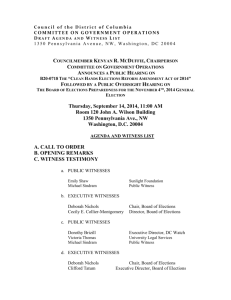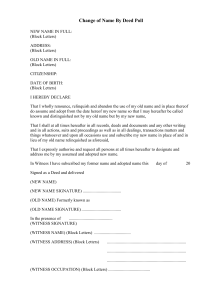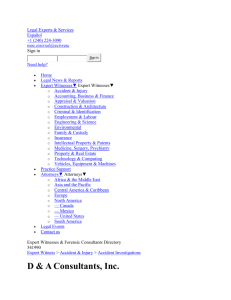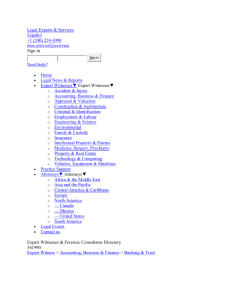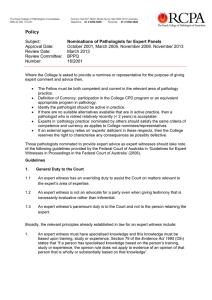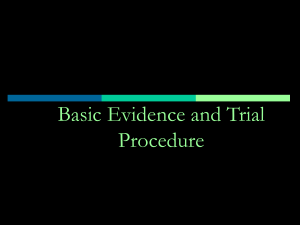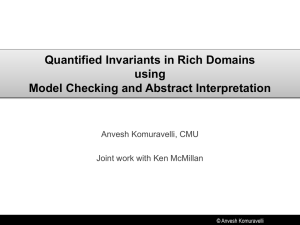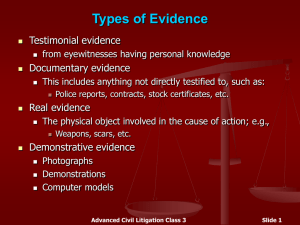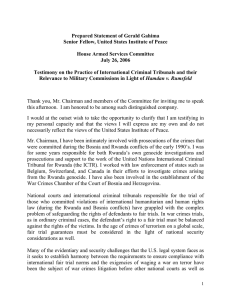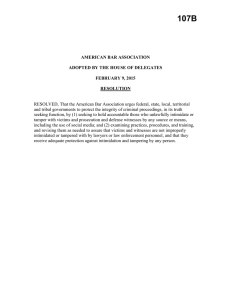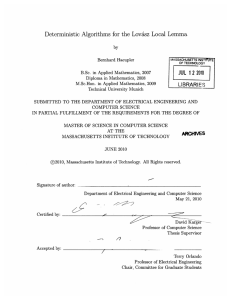Statement Taking Presentation (PowerPoint format, 731Kb)
advertisement
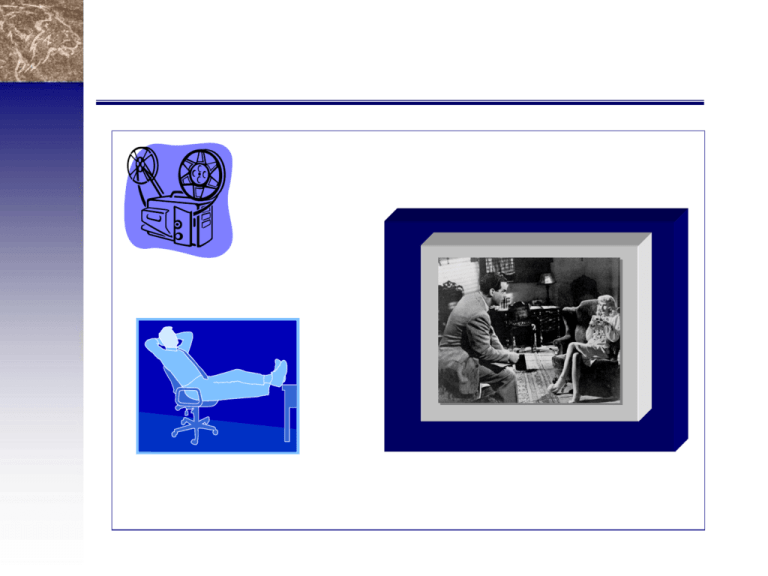
OBJECTIVES Understand when, why and from whom statements are taken Get a witness on your side to enable you to obtain their evidence Create a witness statement Appreciate the pitfalls and the problems in obtaining an incorrect statement AGENDA Reasons for taking a statement When should statements be taken From whom should statements be taken What to include and what to exclude How to obtain a statement Statement taking rules Statement taking – document format Assessing your witness Pitfalls 12 Point Plan Statement taking - a summary Questions WHAT IS A STATEMENT? “A signed statement is a detailed report or a verbatim statement written in the first person by someone who has knowledge of an accident or occurrence” “It is the adjuster’s absolute duty to take an intangible, incoherent and spotty “report” and without changing the contents or the personal idiosyncrasies, convert it into a legible written account which will be clearly understood by even the dullest Judge”. REASONS FOR TAKING A STATEMENT To prove your case - or disprove your opponents To give clients evidence of investigations To support a denial of liability (CPR) To jog a witnesses memory To prevent an alternative version of events WHEN SHOULD STATEMENTS BE TAKEN? As soon as possible after the event In all cases where we intend to deny liability either in full or part In all serious incidents where our clients potential exposure is high WOULD YOU TAKE A STATEMENT FROM THIS MAN? FROM WHOM SHOULD STATEMENTS BE TAKEN? FOUR CATEGORIES A Eye witnesses to the event B Eye witnesses to events immediately before or after the accident C Witnesses to background facts D Negative witnesses “Put your witness to the test” WHAT TO INCLUDE AND EXCLUDE FROM A STATEMENT RULES Statements are in the first person Use the witnesses own choice of words Keep the witness honest - include “bad” evidence as well as “good” Keep witnesses to the point No guesswork! No blame! Avoid profanity or derogatory remarks Make it legible Avoid hearsay HEARSAY HEARSAY “Almost 1300 vehicles were set alight from Lille in the North to Montpellier on the Mediterranean on Saturday night. More than 30 vehicles were also burnt in the Place de la Republic and the 17th Arrondissement in Central Paris. Hormones in the brain may explain why women have fewer motoring accidents than men. A study by the University of Bradford suggests that women are twice as likely to switch tasks to avoid an accident as a man because of the presence of oestrogen. Men tend to carry on with the original task.” HOW TO OBTAIN A STATEMENT Make sure the witness is there! Get the witness on your side - put them at ease Interview them one to one in a quiet environment If possible - assure them that they will have no financial, criminal or disciplinary exposure Be flexible Explain Show an interest - do not be a know all Above all - listen FORMAL RULES Contents The body of the statement The format of the statement What if the witness cannot read or write Alterations General rules for signature of statements ASSESSING YOUR WITNESS What is your witness like? Will they be able to give evidence in Court? Do you doubt their integrity or impartiality? WHAT GIVES A LIAR AWAY? PITFALLS Rasool -v- West Midlands Passenger Transport Executive (1974) Alex Lawrie Factors -v- Morgan (1999) SUMMARY The 12 Point Plan Summary OUR OBJECTIVES WERE Understand when, why and from whom statements are taken Get a witness on your side to enable you to obtain their evidence Create a witness statement Appreciate the pitfalls and the problems in obtaining an incorrect statement



